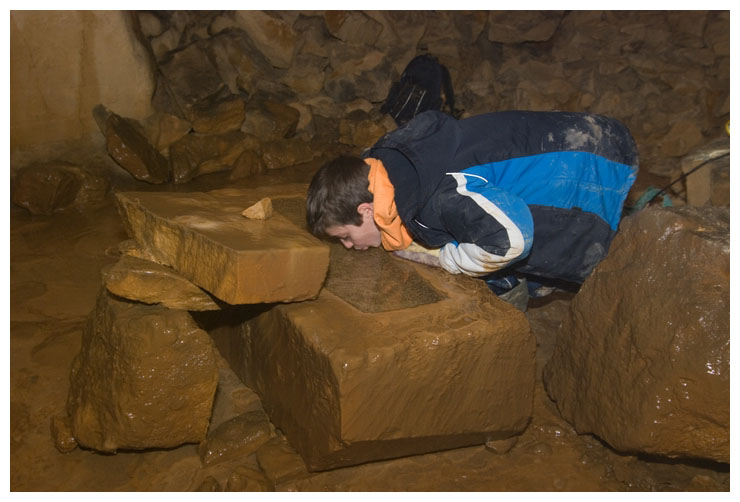
Box, Browns & C.A.D.
Part 2
With Box photographed, we headed over to Brown's Folly Mine where I wanted to attempt to gain access to an adjacent mine that was used as a bomb store in WWII. This was the bomb store at the top of Farleigh Down Tunnel that we'd walked up just over a year earlier. We hadn't gained access to the main store last time as it was in use by a secure storage company, and was sealed. The bomb store formed a large part of the Central Ammunition Depot, (C.A.D.), and consisted of twenty areas known as 'Districts'. The storage company uses eighteen of the districts, but the two largest areas, #19 and #20 Districts lay abandoned and unchanged from their WWII days. After weeks of studying maps and surveys I reckoned I'd worked out a way into #20 District, but it wasn't going to be easy...

Ben drinking from a water trough in Brown's Folly Mine.
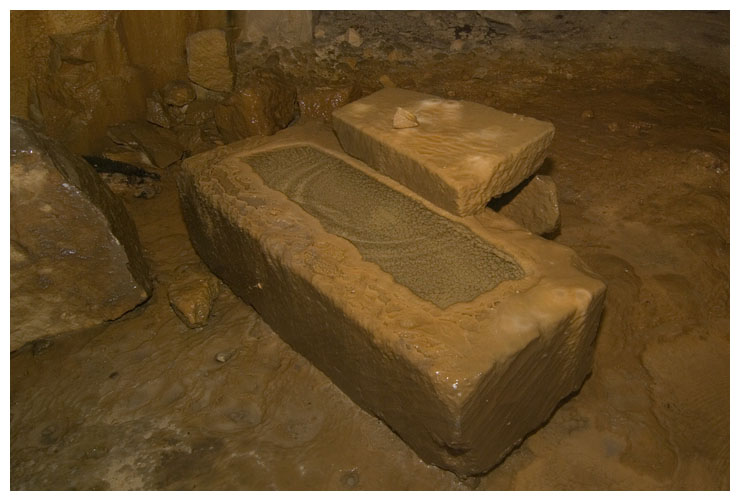
After a short navigation through Brown's, we finally made it to the beginning of the secret passage. I say 'passage' but it was actually a crawl over rocks that took half an hour. We left our friend Root in Brown's as he didn't fancy the crawl, and arranged to meet him a couple of hours later. At best I was able to crawl on my hands and knees, but a lot of it was so tight that I had to belly-crawl, which was absolutely exhausting. Ben was ahead of me and was the first to make it out of the crawl, and I thought I heard him say, "Hello Root". It turns out that Root knew another, much easier way into #20 District! I was very relieved to see him as I was dreading having to to crawl all that way back again.

A heavily calcified wooden barrel.
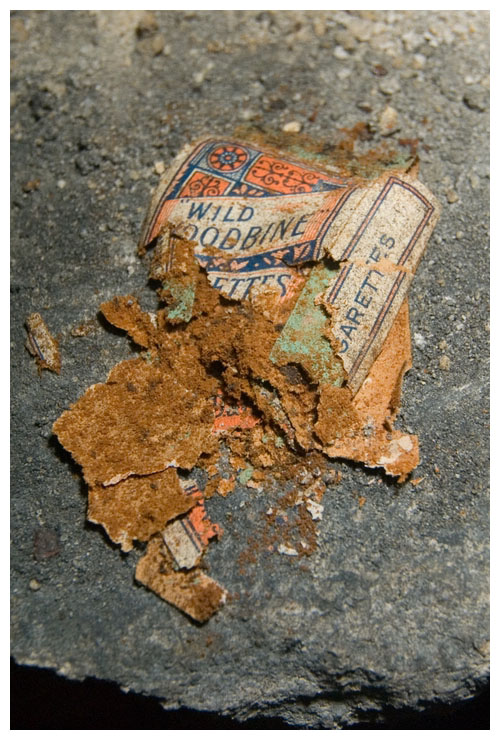
A old cigarette packet.
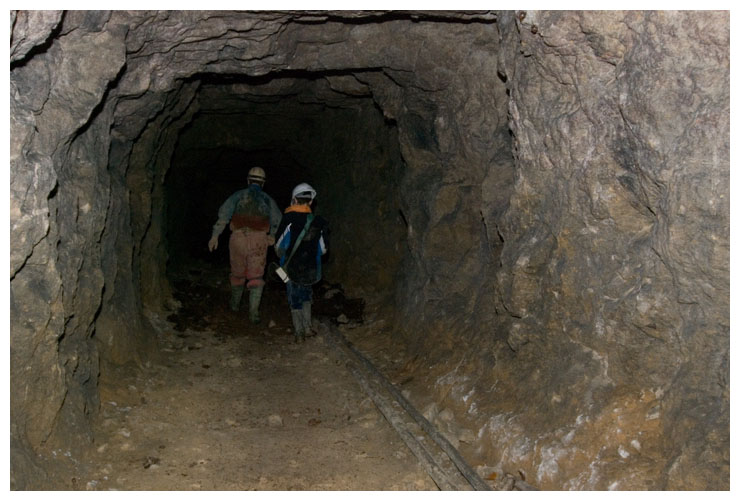
Ben and Root nearly in #20 District. I'd dreamt about this moment for a very long time, and it didn't disappoint...
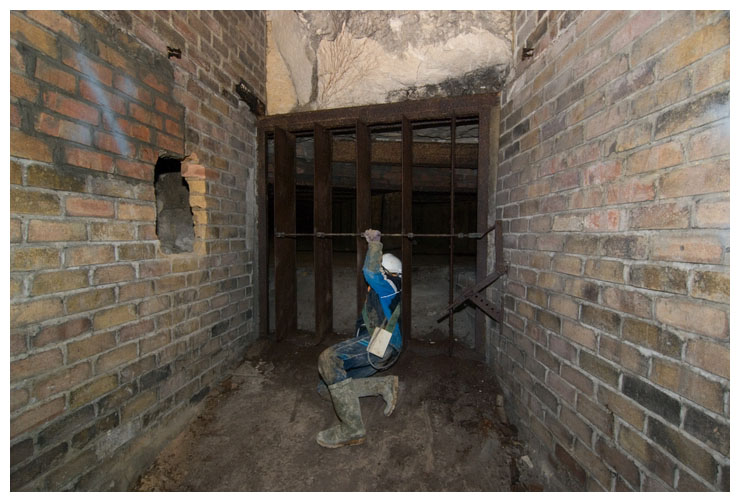
Ben squeezing through part of the old ventilation system that was used to keep the bombs dry.
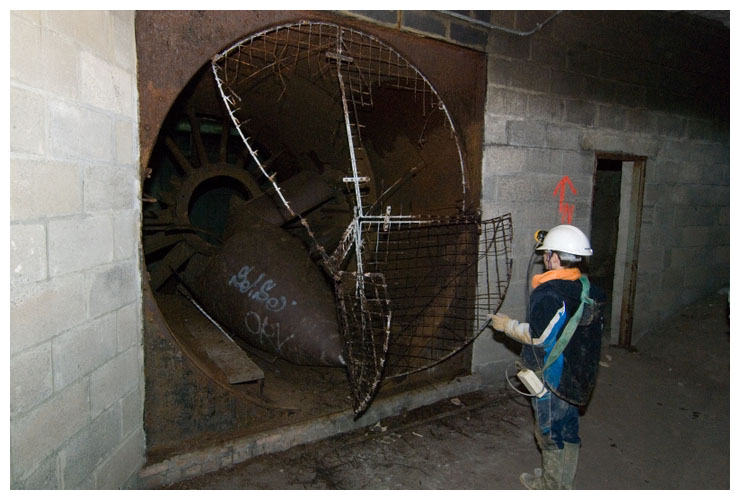
The remains of a giant fan used to force air through the district.
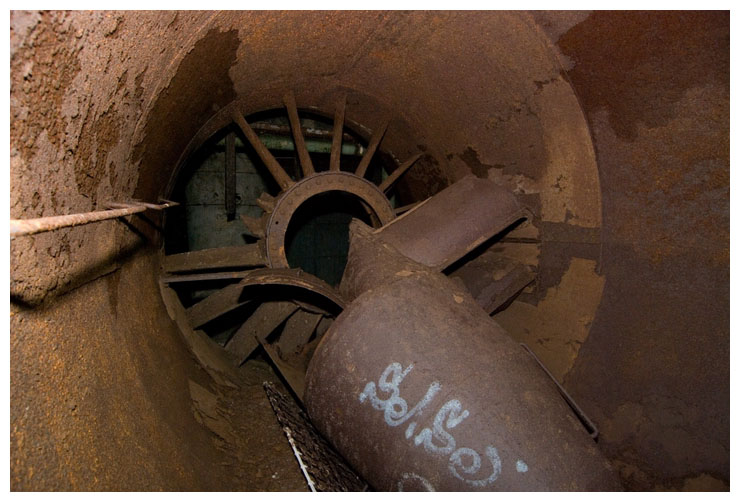
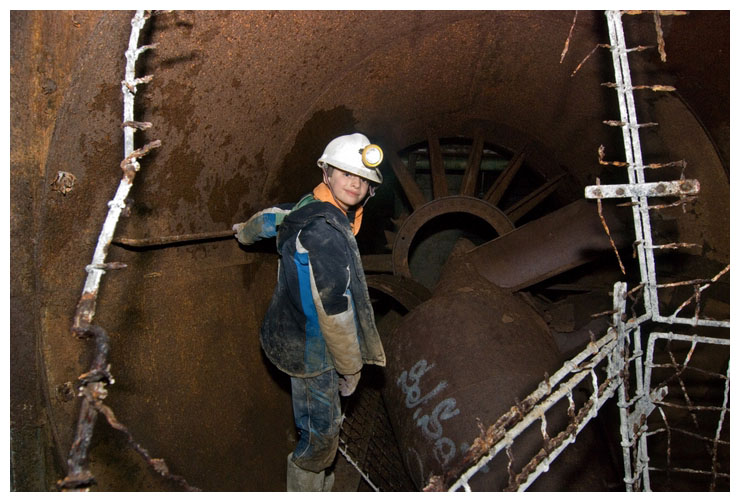

It was huge!
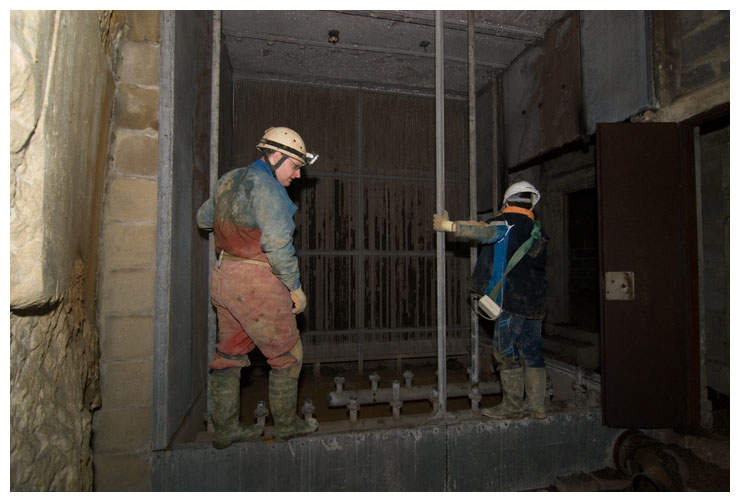
Air scrubbers, used to control the humidity of the air.

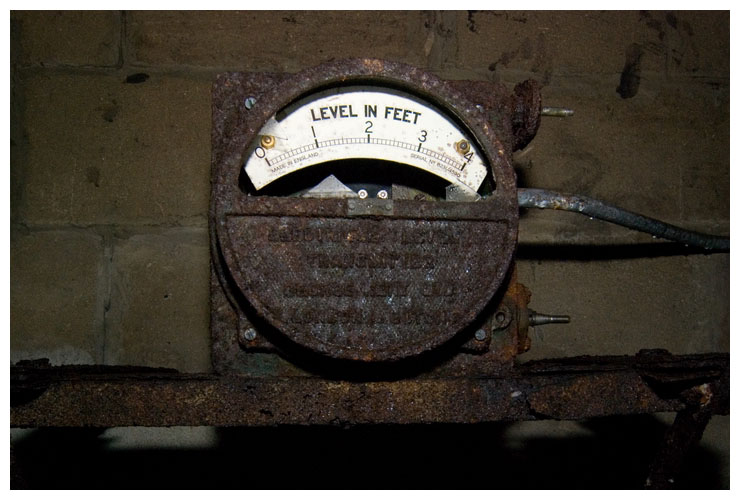

Looking up a shaft that leads to the surface.
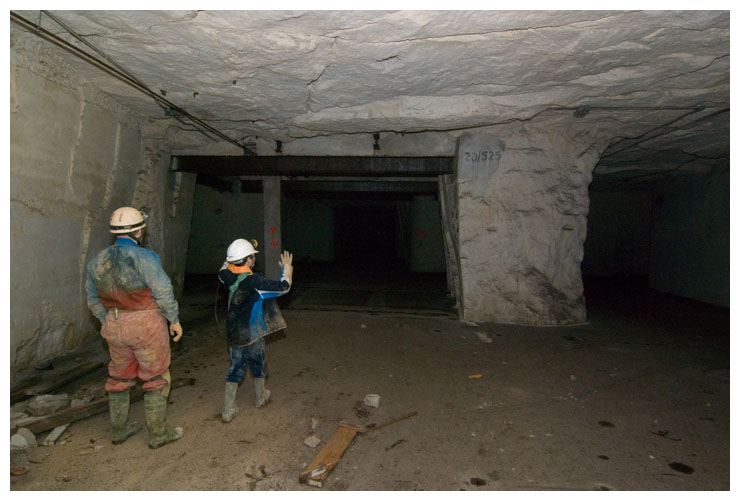
One of the many bomb storage areas.
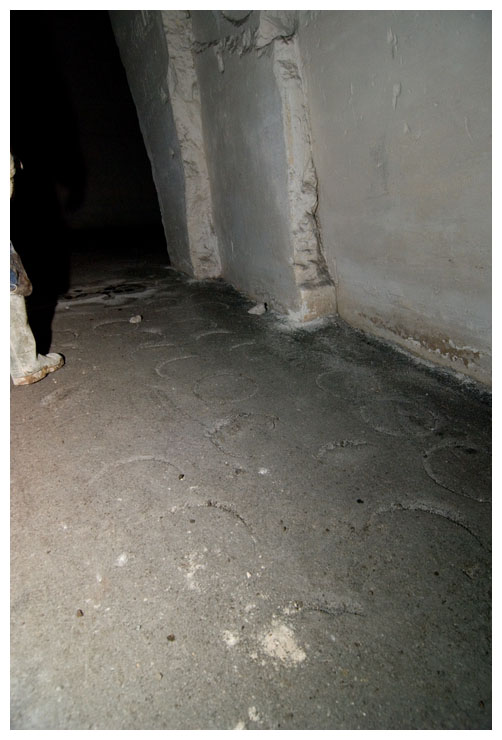
The ground was covered with a special spark-proof asphalt, so that if a bomb were to be dropped it wouldn't explode. The indentations of Navy rounds can be seen in the soft surface.
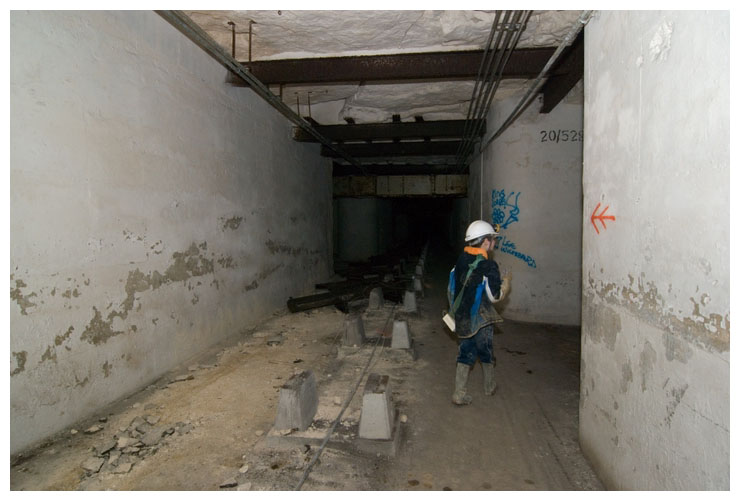
Remains of the conveyor that would have carried the boxes of ammunition.
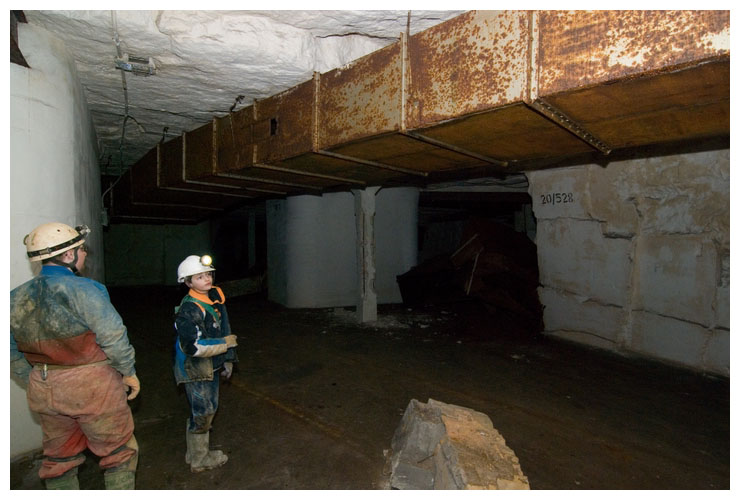
Rusting air-con ducts.
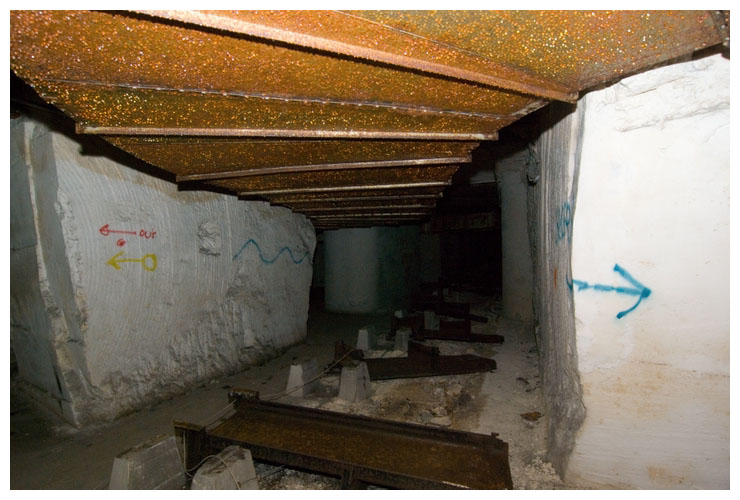

This door eventually led up to #19 District. Notice the hole in the door so that bombs on the conveyor could still pass even if the doors were shut.
